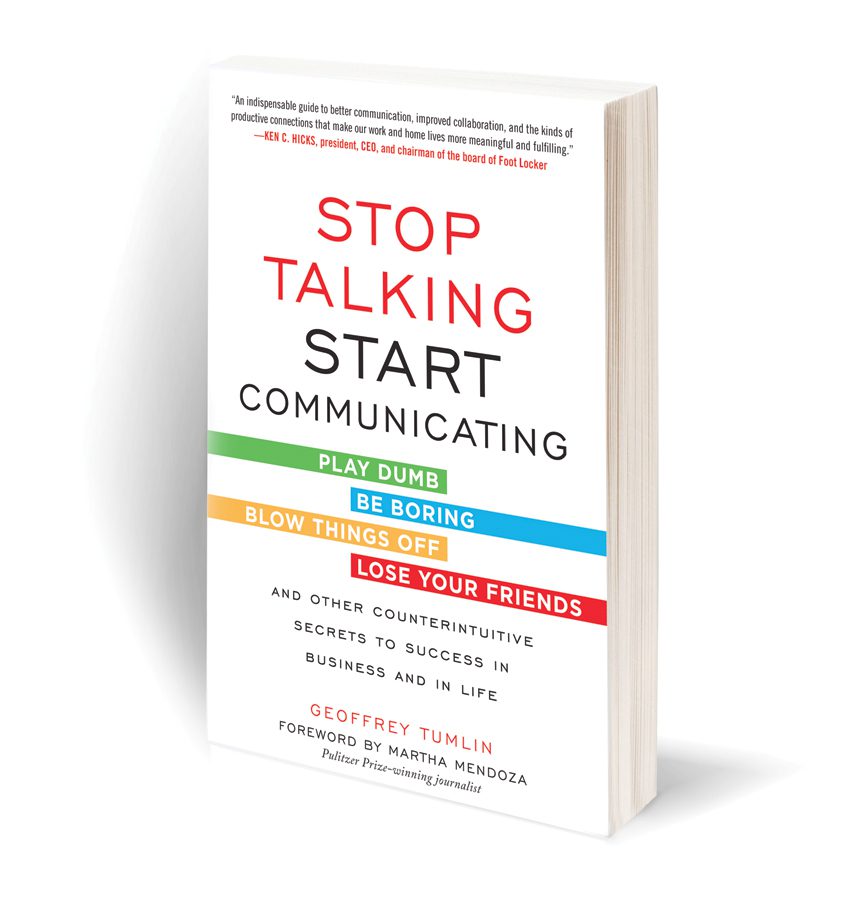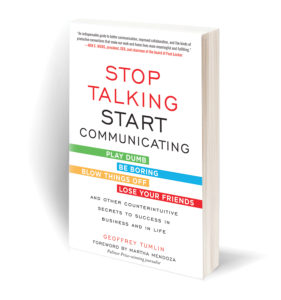
Tough talks are a necessary evil in the workplace. Something is bound to go wrong or an issue needs confrontation. A vendor relationship can go sour. But how you handle these talks says something about how you feel about your staff and your office.

Rather than hesitate, author Geoffrey Tumlin believes that people need to work on their delivery instead. There is an art to sharing bad news, the communications consultant said. So while it won’t win you any popularity contests, it will save you time, energy and money in the end, he noted.
“If you were hoping for a way around the unpleasant emotions that accompany the delivery of bad news, I’ll have to disappoint you – there isn’t one,” said Tumlin, author of the new book “Stop Talking, Start Communicating: Counterintuitive Secrets to Success in Business and in Life” (McGraw-Hill, August 2013). “But there are some strategies to help you deal with these conversations more promptly and successfully.”
So here are a few suggestions on how to deliver the message without getting the messenger (read: you) in trouble.
1. Have a core message. Don’t beat around the bush. Find a good hook. Determining your core message will be surprisingly easy when it comes to delivering bad news, Tumlin said. “Your core message is obvious when you’re giving bad news: It’s the thing you don’t want to say,” he points out. “Your core message might be, ‘We’re switching vendors,’ or, ‘We have to let you go.’ The message you’ve been avoiding is the message you need to deliver.”
 2. Stay on topic. Don’t let your own worries get you off track. And don’t let the person you’re speaking with change your mind about what you need to say. “You don’t do yourself or the other person any favors by putting off a hard conversation,” Tumlin said. “Remember, when giving bad news, you’re not negotiating, fact finding or gathering input. … Bad news is like taking off a Band-Aid—it’s best done quickly.”
2. Stay on topic. Don’t let your own worries get you off track. And don’t let the person you’re speaking with change your mind about what you need to say. “You don’t do yourself or the other person any favors by putting off a hard conversation,” Tumlin said. “Remember, when giving bad news, you’re not negotiating, fact finding or gathering input. … Bad news is like taking off a Band-Aid—it’s best done quickly.”
3. Say what you have to say. Keep it simple so the message doesn’t get lost in your explanations. Too many words may muddle the situation even more. “Strive to state your core message and explanation – the reason behind the message – one sentence,” Tumlin said. “You can repeat variants of your message and explanation if you want to say more, but don’t add new information or you may encourage a drift away from your core message.”
4. Get in and get out. If you’ve communicated your core message, and the other person understands, it’s probably acceptable to start thinking about an exit. “In this type of conversation, your core message pretty much speaks for itself, and a great deal of unnecessary damage is often done when you overstay a difficult conversation,” Tumlin said.
5. Don’t plan an encore. You can and should field practical questions that emerge after you’ve delivered the bad news, but don’t agree to a request for a follow-up conversation because there’s really nothing to discuss. “The more you talk about the bad news itself, as opposed to the administrative and logistical details of the news, the more heartache and confusion you’re likely to cause the recipient. Follow-on conversations are usually a very counterproductive idea,” Tumlin said.








